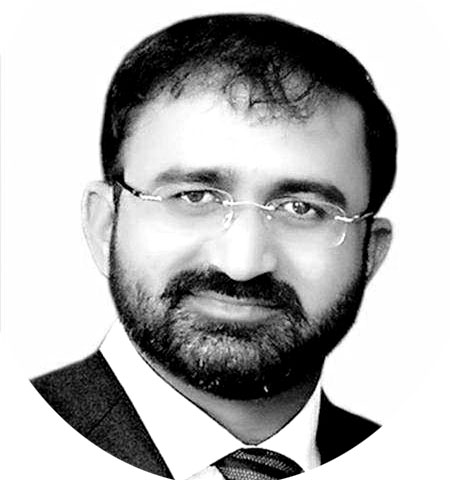Dr Umar Riaz Abbasi
THE Islamic world is standing at a crossroads today, besieged by difficulties from all sides and fielding onslaughts from all fronts, yet it is endeavouring to forge ahead as it battles the pressures of superpowers to keep it in the shackles of helplessness, hesitation and vulnerability, unable to set out in the right direction and embark on a new civilizational cycle that would link the present to the past and lay the foundations of the future. The focus on conditions in the Islamic world will remain the responsibility of those involved in political, social and economic studies, and more particularly of joint Islamic action leaderships and the intellectual, academic and cultural elites dedicated to researching such crucial issues for the present of the Islamic world and its future prospects which we shall strive to make bright, prosperous and safe. I hope that this study, which comes complete with its essence, will be a useful contribution to the endeavours of researchers and academics engaged in this specific field.
Today, the Islamic world is confronted with many challenges. Some of these challenges have accumulated over past decades and others are collateral consequences of the transformation experienced by the world at the current juncture. Others yet grew out of specific factors inherent to the approaches adopted in tackling these critical issues. The gravity of these problems has worsened to such an extent as to constitute a serious source of alarm, in the absence of a suitable resolution applied with strength of mind, clear vision and a realistic approach that takes cognizance of all elements and can delve to the core of matters while steering clear of the phantasms and delusions that result from lack of civilizational vision and a flawed understanding of the nature of all these challenges.
Before all the challenges endured by the Islamic world at many a level, and particularly the wars, conflicts, sectarian strife, division, extremism and terrorism shaking many parts of this world today, the wise and farsighted observer will recognize that the challenges besieging Muslim countries from ocean to ocean in these critical times are too great to be met with limited endeavours, within a narrow framework and with means that are too poor to apprehend the dimensions of the global development battle the Islamic world has to fight and win, and to move from there to the battle of rebuilding the civilizational edifice, a mission involving political, economic, scientific and technological, as well as cultural and intellectual edification. The Islamic world overlooks 18 seas, three oceans and four lakes shared with other countries. The oceans are the Indian, the Atlantic and the Pacific Oceans. The seas are the Mediterranean Sea, the Red Sea, the Caspian Sea, the Gulf of Eden, the Arabian Gulf, the Black Sea, the South China Sea, Marmara Sea, Timor Sea, the Aegean Sea, the Dead Sea, the Adriatic, and many others.
Muslims represent 25% of the world’s total population, but considering that the fertility rate in the Islamic world is higher than in any other part of the world, the number of Muslims is constantly on the increase. The surface area of the Islamic world is estimated at 41 707 540 square kilometres, representing 28% of the earth’s land surface area. Member States of the Organization of Islamic Cooperation are divided into geographical groups: Asian countries representing the majority, African countries, Arab countries, four European countries which are Kosovo, Bosnia-Herzegovina and Albania, and the two Latin American countries of Surinam and Guyana. Most countries in the Islamic world came under European colonialism, and then successively obtained their independence.
With regard to ‘Higher Education, Science and Technology’, the programme of action sets the following commitments: 1. Effectively improve and reform educational institutions and curricula in all levels, link postgraduate studies to the comprehensive development plans of the Islamic world. At the same time, priority should be given to science and technology and facilitating academic interaction and exchange of knowledge among the academic institutions of the Member States, and urge the Member States to strive for quality education that promotes creativity, innovation and research and development. 2. Assimilate highly-qualified Muslims within the Muslim world, develop a comprehensive strategy in order to utilize their expertise and prevent brain migration phenomenon. 3. Call upon Islamic countries to encourage research and development programmes. 4. Encourage public and private national research institutions to invest in technology capacity-building, in areas of advanced technologies, such as the acquisition of nuclear technology for peaceful uses. 5. Call upon the Member States to extend enhanced support to the Islamic University of Technology in Bangladesh in order to enable it to contribute more towards capacity building of the OIC Member States through human resources development.
—The writer is well-known author and lecturer at National University of Modern Languages Islamabad.










